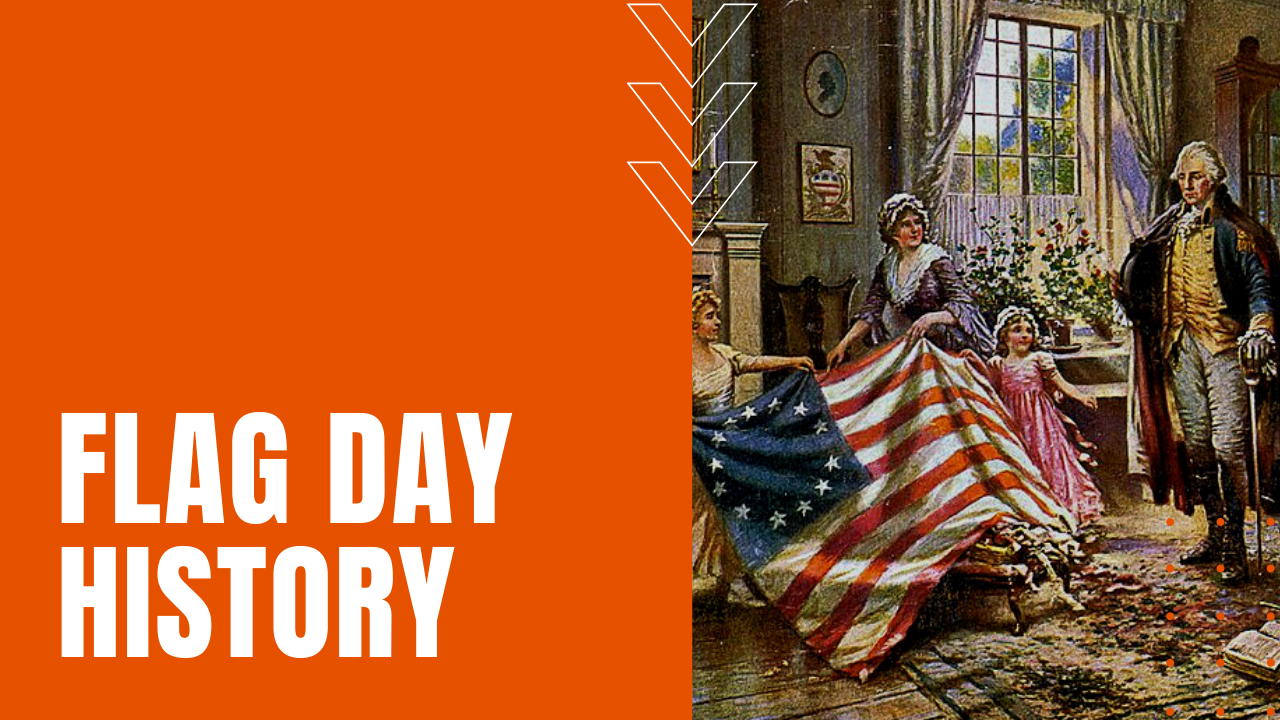History of Flag Day: Betsy Ross, Bernard Cigrand, and Old Glory

When war broke out in 1775 between the colonists and her British overlords, at first colonial combatants were not fighting under a single flag, which initially distracted from a sense of unified patriotic resolve. After the Second Continental Congress convened in Philadelphia to charter the Continental Army, the forefathers also saw the need for an “American” flag.
The American Flag
The first mock-up comprised 13 red and white alternating stripes, with a Union Jack in the corner, but George Washington and others soon realized that their initial design looked too much like the British Union Jack, which would not be a great confidence-builder for Continental Army soldiers in the field of battle.
Instead, on June the 14th, 1777, the Second Continental Congress paused their work on the Articles of Confederation, passing a resolution that defined the American flag “to be 13 stripes, alternate red and white,” while “the union be 13 stars, white in a blue field, representing a new constellation.”
In response, Betsy Ross, an established seamstress and flag maker with over 50 years of experience, was commissioned to stitch together the first American flag, known forevermore as “Old Glory.”
Flag Day History
The concept of Flag Day first came to light in 1885, when a small-town Wisconsin teacher named Bernard Cigrand proposed June 14th as an annual day to pay homage to Old Glory.
After leading his school in the first formal observance of the holiday, he continued to advocate for a national Flag Day holiday for the rest of his life. 31 years later, in 1916 President Woodrow Wilson officially established June 14th as Flag Day, making the annual observance a day of thanks to an American icon.
